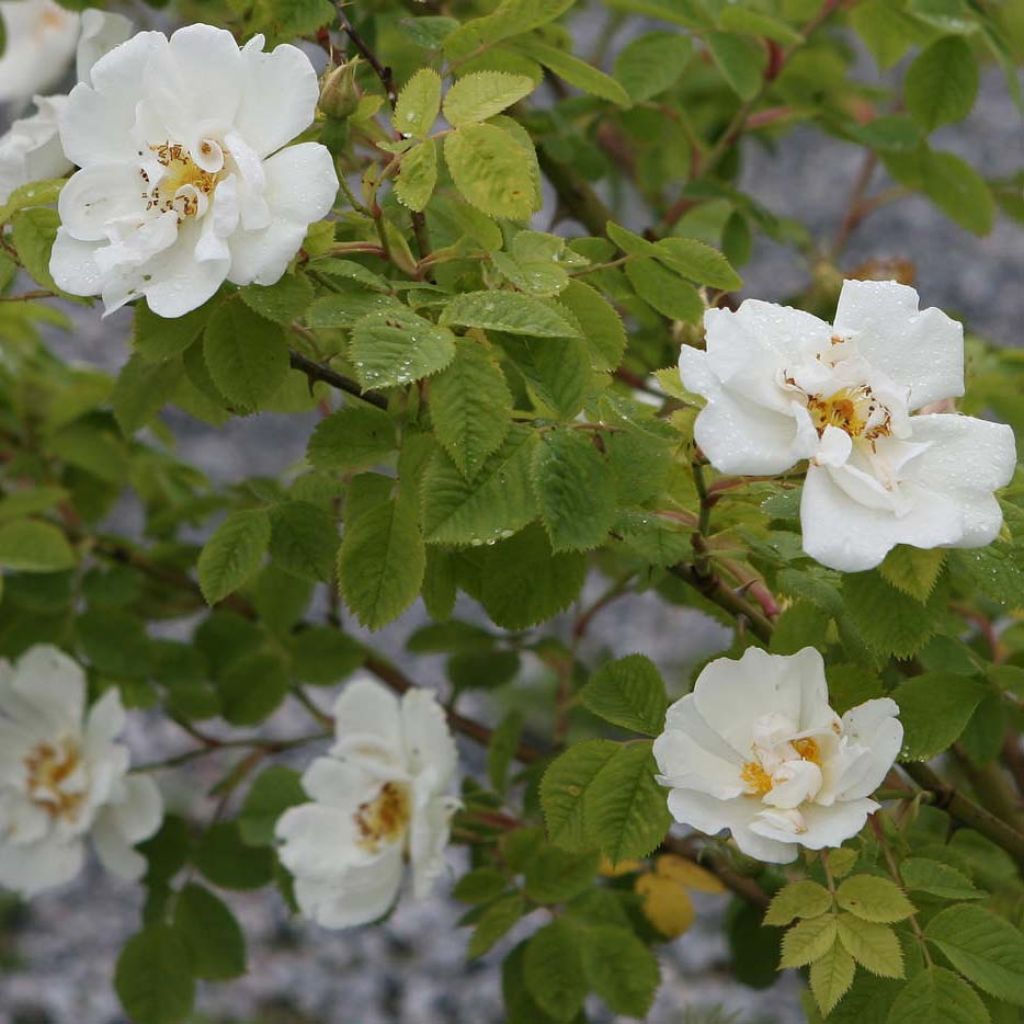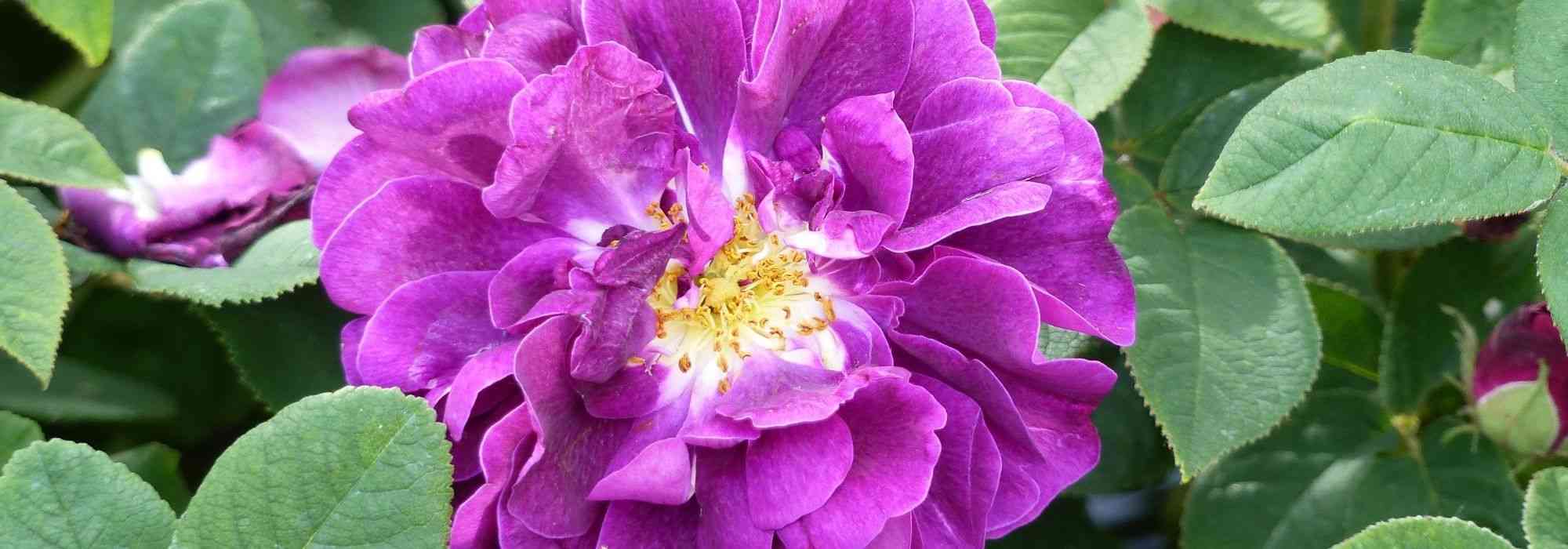

Rosa alba Suaveolens


Rosa alba Suaveolens


Rosa alba Suaveolens


Rosa alba Suaveolens


Rosa alba Suaveolens
View more pictures
Hide images

Thierry P.

N/A
Thierry P. • 84 FR

Thierry P.

N/A
Thierry P. • 84 FR

Thierry P.

N/A
Thierry P. • 84 FR

Thierry P.

No text to translate.
Thierry P. • 84 FR

Thierry P.

May flowering - image 1
Thierry P. • 84 FR
Rosa alba Suaveolens
Rosa x alba Suaveolens
Rose
I ordered for my aunt Irene, she showed me the alba rose bush that she received on time, very well packaged, in a pot, with vegetation and buds, well branched, and very healthy. We thank you for this excellent quality and service.
Fafa , 01/05/2024
Special offer!
Receive a €20 voucher for any order over €90 (excluding delivery costs, credit notes, and plastic-free options)!
1- Add your favorite plants to your cart.
2- Once you have reached €90, confirm your order (you can even choose the delivery date!).
3- As soon as your order is shipped, you will receive an email containing your voucher code, valid for 3 months (90 days).
Your voucher is unique and can only be used once, for any order with a minimum value of €20, excluding delivery costs.
Can be combined with other current offers, non-divisible and non-refundable.
Home or relay delivery (depending on size and destination)
Schedule delivery date,
and select date in basket
We guarantee the quality of our plants for a full growing cycle, and will replace at our expense any plant that fails to recover under normal climatic and planting conditions.
Description
The 'Alba Suaveolens' rose is a beautiful and fragrant flower cultivated in European gardens for a long time. It's a spontaneous hybrid and is believed to have resulted from the crossbreeding of wild roses (Rosa canica) and Damask roses (Rosa x damascena). This rosebush is almost wild and is known for its incredible strength and adaptability to all regions and soils. It produces semi-double, milky white flowers almost luminescent in the backlight. These flowers bloom in spring or summer and are complemented by matte foliage with grey and bluish reflections, which make them stand out from other plants. The Alba Suaveolens Rosebush is an essential addition to the gardens of old and botanical rose lovers or simply for those busy gardeners who don't enjoy pruning and maintenance. This unique rose is a fantastic bush for the countryside and flowering hedges.
The (x) alba var. suaveolens is a rose known since ancient times and cultivated since the Renaissance. It has semi-double and highly fragrant flowers and is particularly valued for its essential oil and white rose water. The plant grows into a sturdy and well-branched bush with an upright but bushy form, reaching up to 2 to 3 metres (9 to 10 feet) in height and 1.50 metres (4 to 11 feet) in spread, depending on the growing conditions. Its branches are thorny and covered with abundant foliage divided into 5 green-grey-blue leaflets, matte on the upper side and villous on the underside, with the leaflets often slightly folded. It is not susceptible to rose diseases. Depending on the climate, its unique but abundant flowering occurs from May-June to July. On the 1-year-old branches, clusters of 2 to 7 pretty round cream-coloured buds form and open into semi-double white flowers. These flowers are 7cm (2.8 in) wide and have the shape of flat-opening cups with a yellow stamen heart. They are highly fragrant, with a musky and powdery scent. The formation of long orange hips follows the flowers. This rosebush is easily cultivated on its own roots but tends to sucker abundantly.
The descendants of Rosa (x) alba roses are wonderfully fragrant, highly floribundant, and vigorous in growth, with a graceful habit. These bushes have healthy and ornamental grey-green foliage, are very hardy, and live for many years in the garden. They thrive well in semi-shaded locations. 'Suaveolens' is a variety with the same vigour and slightly stiff habit as the typical form and is superb as a hedge or in the back of a flowerbed.
It tolerates all soils and climates, which makes it suitable for all regions. It can be planted in a large romantic flowerbed or a countryside hedge alongside Rosa hugonis, which blooms early with multiple sulphur yellow dog roses, Rosa complicata, which is easy to cultivate, or rosa (x) chinensis mutabilis, a multicoloured harlequin that blooms all summer long. It is a sturdy and low-maintenance bush, and in spring, the fragrance and roundness of lilacs and the purity of mock oranges will accompany its brand-new growth, while in summer, abelias and buddleias (alternifolia, Pink Delight) will take over.
It is understandable if the interest in botanical roses and their hybrids is not widely spread, especially in poor soil or difficult climates. However, these roses are the ancestors of modern roses and are generally more sturdy and dependable.
Rosa alba Suaveolens in pictures




Plant habit
Flowering
Foliage
Botanical data
Rosa
x alba
Suaveolens
Rosaceae
Rose
Central Europe
Rosa canina Laxa (4L/5L pot, Wrapped bare root)
Planting and care
The old rose alba suaveolens, a hybrid of Rosa (x) alba, is not picky about the type of soil it grows in as long as it is well-drained and deep enough for its roots. It can withstand temperatures as low as -15°C (5°F) and can be grown in regions with harsh climates. It can tolerate partial shade but dislikes compacted soil. This rose is rarely afflicted by disease and can withstand drought once it is well-established. It is suitable for all gardens, provided it is planted and cared for properly. Choose a sunny or partially shaded location with well-prepared and well-drained ordinary soil to plant it. Alternatively, it can grow in shady areas, ideal for hot climates. Removing any dead wood in winter and pruning lightly after the summer flowering is recommended. Cut it back to 1.50m (4 ft 11 in) after flowering if necessary.
It's common for roses to develop stains or become unsightly towards the end of summer. However, this is not a cause for concern as it does not affect their growth. These stains are a natural phenomenon and won't cause any harm to the rose.
Planting period
Intended location
Care
Planting & care advice
-
, onOrder confirmed
Reply from on Promesse de fleurs
Similar products
Haven't found what you were looking for?
Hardiness is the lowest winter temperature a plant can endure without suffering serious damage or even dying. However, hardiness is affected by location (a sheltered area, such as a patio), protection (winter cover) and soil type (hardiness is improved by well-drained soil).

Photo Sharing Terms & Conditions
In order to encourage gardeners to interact and share their experiences, Promesse de fleurs offers various media enabling content to be uploaded onto its Site - in particular via the ‘Photo sharing’ module.
The User agrees to refrain from:
- Posting any content that is illegal, prejudicial, insulting, racist, inciteful to hatred, revisionist, contrary to public decency, that infringes on privacy or on the privacy rights of third parties, in particular the publicity rights of persons and goods, intellectual property rights, or the right to privacy.
- Submitting content on behalf of a third party;
- Impersonate the identity of a third party and/or publish any personal information about a third party;
In general, the User undertakes to refrain from any unethical behaviour.
All Content (in particular text, comments, files, images, photos, videos, creative works, etc.), which may be subject to property or intellectual property rights, image or other private rights, shall remain the property of the User, subject to the limited rights granted by the terms of the licence granted by Promesse de fleurs as stated below. Users are at liberty to publish or not to publish such Content on the Site, notably via the ‘Photo Sharing’ facility, and accept that this Content shall be made public and freely accessible, notably on the Internet.
Users further acknowledge, undertake to have ,and guarantee that they hold all necessary rights and permissions to publish such material on the Site, in particular with regard to the legislation in force pertaining to any privacy, property, intellectual property, image, or contractual rights, or rights of any other nature. By publishing such Content on the Site, Users acknowledge accepting full liability as publishers of the Content within the meaning of the law, and grant Promesse de fleurs, free of charge, an inclusive, worldwide licence for the said Content for the entire duration of its publication, including all reproduction, representation, up/downloading, displaying, performing, transmission, and storage rights.
Users also grant permission for their name to be linked to the Content and accept that this link may not always be made available.
By engaging in posting material, Users consent to their Content becoming automatically accessible on the Internet, in particular on other sites and/or blogs and/or web pages of the Promesse de fleurs site, including in particular social pages and the Promesse de fleurs catalogue.
Users may secure the removal of entrusted content free of charge by issuing a simple request via our contact form.
The flowering period indicated on our website applies to countries and regions located in USDA zone 8 (France, the United Kingdom, Ireland, the Netherlands, etc.)
It will vary according to where you live:
- In zones 9 to 10 (Italy, Spain, Greece, etc.), flowering will occur about 2 to 4 weeks earlier.
- In zones 6 to 7 (Germany, Poland, Slovenia, and lower mountainous regions), flowering will be delayed by 2 to 3 weeks.
- In zone 5 (Central Europe, Scandinavia), blooming will be delayed by 3 to 5 weeks.
In temperate climates, pruning of spring-flowering shrubs (forsythia, spireas, etc.) should be done just after flowering.
Pruning of summer-flowering shrubs (Indian Lilac, Perovskia, etc.) can be done in winter or spring.
In cold regions as well as with frost-sensitive plants, avoid pruning too early when severe frosts may still occur.
The planting period indicated on our website applies to countries and regions located in USDA zone 8 (France, United Kingdom, Ireland, Netherlands).
It will vary according to where you live:
- In Mediterranean zones (Marseille, Madrid, Milan, etc.), autumn and winter are the best planting periods.
- In continental zones (Strasbourg, Munich, Vienna, etc.), delay planting by 2 to 3 weeks in spring and bring it forward by 2 to 4 weeks in autumn.
- In mountainous regions (the Alps, Pyrenees, Carpathians, etc.), it is best to plant in late spring (May-June) or late summer (August-September).
The harvesting period indicated on our website applies to countries and regions in USDA zone 8 (France, England, Ireland, the Netherlands).
In colder areas (Scandinavia, Poland, Austria...) fruit and vegetable harvests are likely to be delayed by 3-4 weeks.
In warmer areas (Italy, Spain, Greece, etc.), harvesting will probably take place earlier, depending on weather conditions.
The sowing periods indicated on our website apply to countries and regions within USDA Zone 8 (France, UK, Ireland, Netherlands).
In colder areas (Scandinavia, Poland, Austria...), delay any outdoor sowing by 3-4 weeks, or sow under glass.
In warmer climes (Italy, Spain, Greece, etc.), bring outdoor sowing forward by a few weeks.

















































